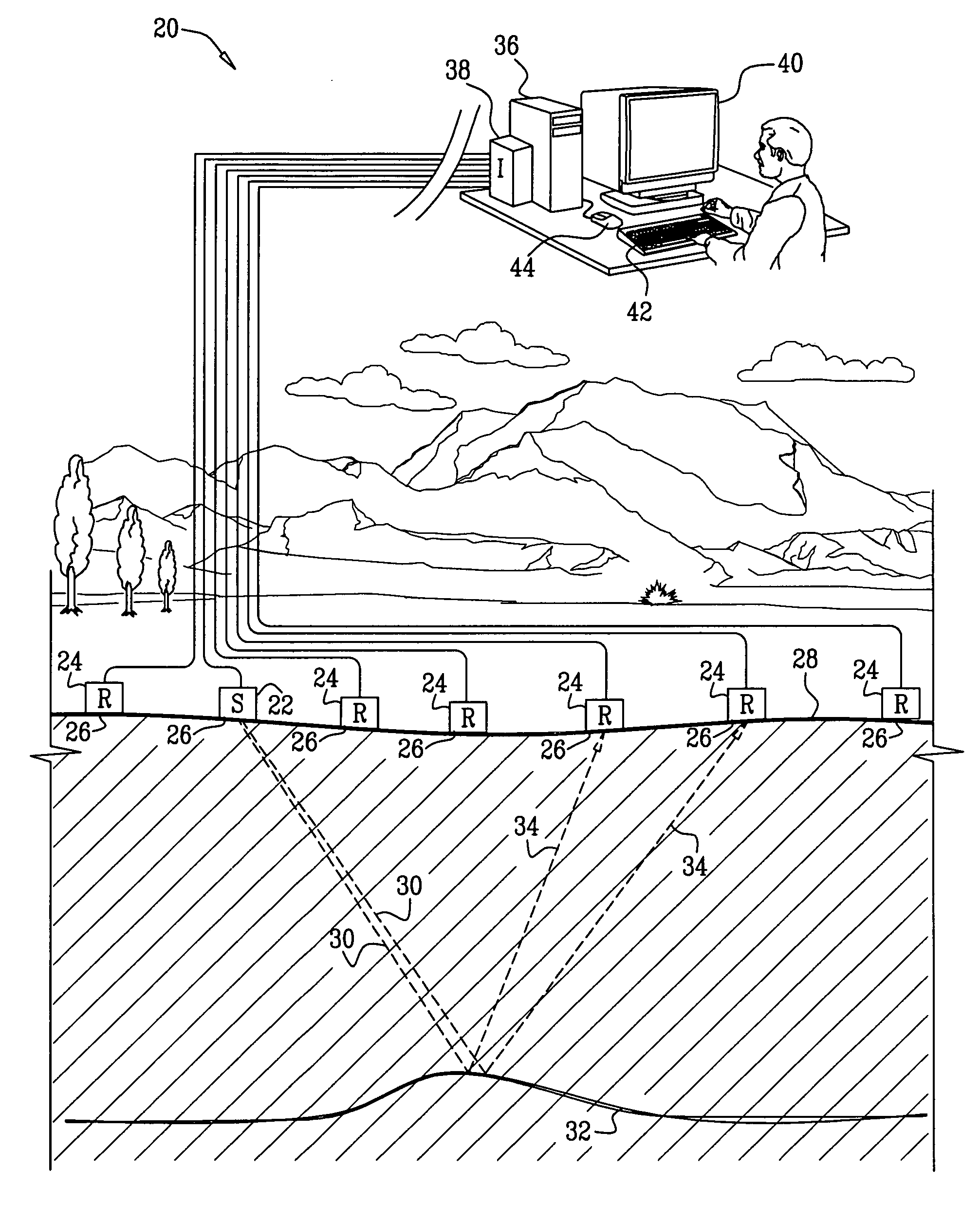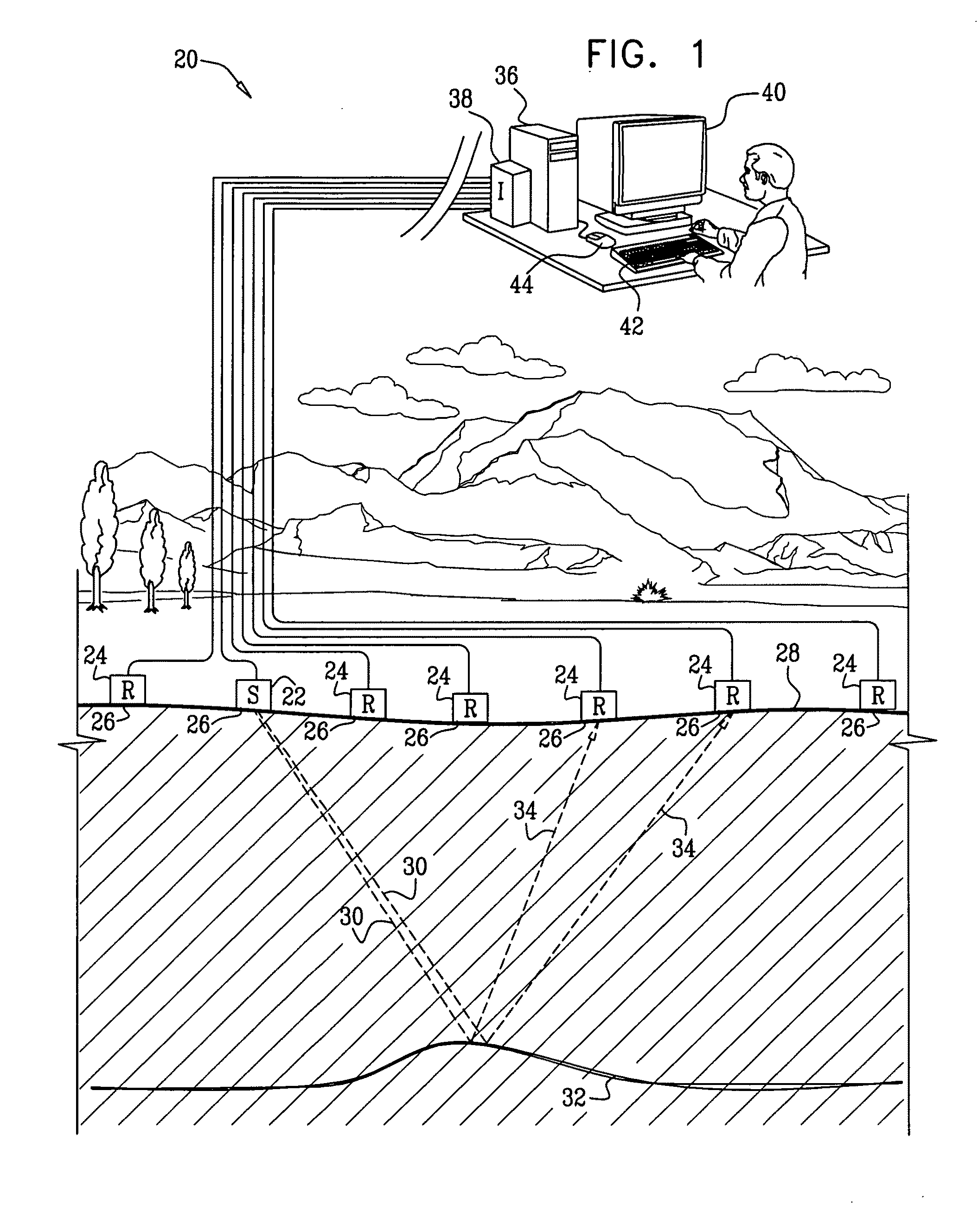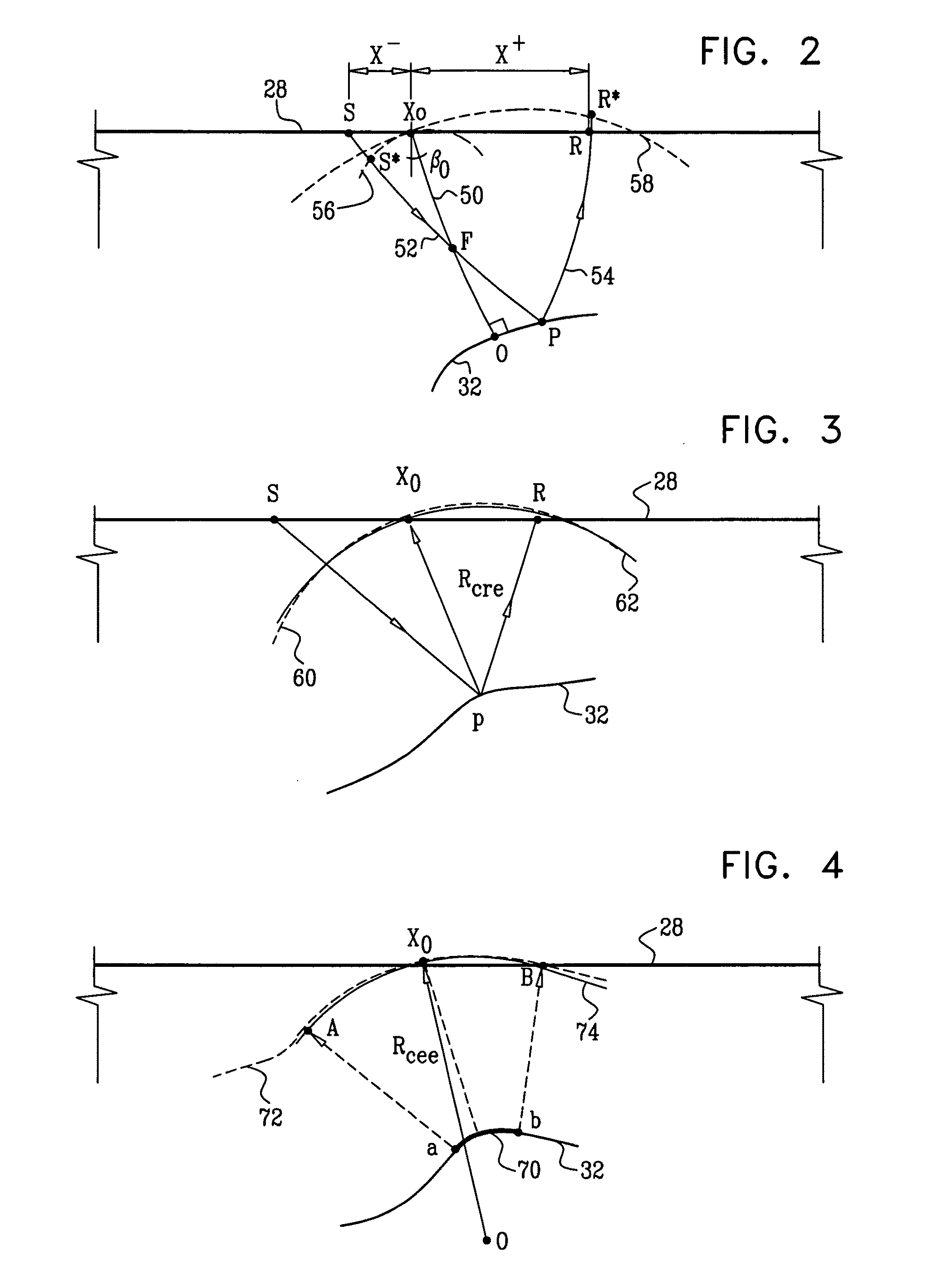Wavefront-defined radon transform
a wavefront-defined and transform technology, applied in the field of seismic data processing, can solve problems such as information loss, and achieve the effect of improving imaging quality
- Summary
- Abstract
- Description
- Claims
- Application Information
AI Technical Summary
Benefits of technology
Problems solved by technology
Method used
Image
Examples
Embodiment Construction
Overview
[0037]Embodiments of the present invention that are described hereinbelow provide improved methods and systems for analyzing seismic data. The methods and systems described herein apply a novel transform, referred to herein as a Wavefront-defined Radon Transform (WRT), which is expressed in terms of wavefront parameters of the seismic waves.
[0038]In some embodiments, a signal processor is provided with a collection of traces in a 2-D or 3-D time-offset domain. The set of traces is referred to as an input supergather, and may comprise common-shot gathers, common receiver gathers, CMP gathers, or a combination of different gather types. Generally, the traces in the input supergather need not be pre-selected in any way. The signal processor applies the wavefront-defined Radon transform to the input supergather, thereby converting the input supergather into a multidimensional data array that is defined as a function of at least two wavefront parameters. The wavefront parameters ...
PUM
 Login to View More
Login to View More Abstract
Description
Claims
Application Information
 Login to View More
Login to View More - R&D
- Intellectual Property
- Life Sciences
- Materials
- Tech Scout
- Unparalleled Data Quality
- Higher Quality Content
- 60% Fewer Hallucinations
Browse by: Latest US Patents, China's latest patents, Technical Efficacy Thesaurus, Application Domain, Technology Topic, Popular Technical Reports.
© 2025 PatSnap. All rights reserved.Legal|Privacy policy|Modern Slavery Act Transparency Statement|Sitemap|About US| Contact US: help@patsnap.com



